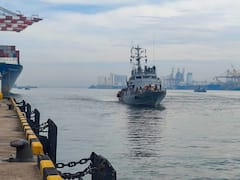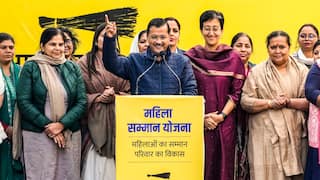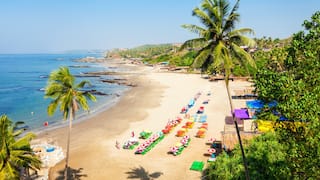Connecting Ganga And Mekong — A Road Less Travelled But Can Pave Way For A Flourishing Future
Though 1,875 km of land divides Ganga and Mekong rivers, people in ancient days never felt any imagined barrier. Unfortunately, human barrier today is playing a bigger role in preventing their free flow.

Centuries ago, the sacred waters of the Ganga and the Mekong intermingled to irrigate the syncretic culture of two distant lands, connecting the two regions, though full of physical hurdles. The two lands still remain devoid of modern and regular land connectivity, and may take another year or two to symbolically revive the land connections between the plains of Ganges and Mekong, with the opening of Kolkata-Myanmar-Bangkok trilateral highway. The project was reviewed during the July 17 foreign ministerial meetings of BIMSTEC and the Mekong Ganga Cooperation (MGC) mechanism in Bangkok.
BIMSTEC, or the Bay of Bengal Initiative for Multi-Sectoral Technical and Economic Cooperation, was set up in 1996, and with the inclusion of Myanmar it expanded to seven members (Bangladesh, Bhutan, India, Myanmar, Nepal, Sri Lanka, and Thailand) in 1997, whereas the MGC, set up in 2000, involves India and five member countries of ASEAN (Association of Southeast Asian Nations) namely Myanmar, Laos DPR, Cambodia, Thailand and Vietnam, lending much credence to the group from Indian strategic perspective in the modern age geopolitical environment.
Also Read: Make Bay Of Bengal The Bridge Of Connectivity, Prosperity & Security: PM Modi At BIMSTEC Summit 2022
Though 1,875 kms of land divides the Ganga and Mekong rivers in the famous lands of Angkor Wat, the people of two regions in ancient days never felt any imagined barrier that could have prevented them from intermingling and developing close cultural and economic exchanges. They easily overcame all physical hurdles to crisscross the entire landmass. Unfortunately, the human barrier today is playing a bigger role in preventing the free flow of peoples from the two areas. Hence, both BIMSTEC and MGC have not yet been able to mark their presence. The area flourished with Hindu and Buddhist kingdoms, reflecting proximity between two societies. Today, the area is riven with political differences and violent rebel activities, and low level of diplomatic, official and political contacts are preventing the same harmonious relationship that prevailed almost a thousand years ago.
The peoples and governments of the region have realised the potential of promoting free movement of trade and peoples in the area. In order to promote peace, tranquillity and prosperity in India and its immediate neighbourhoods like the ancient lands of Myanmar, Cambodia, Laos, Vietnam, Thailand, the sovereign governments of the two regions are engaged in promoting similar cooperative living today. The visit of Indian External Affairs Minister S Jaishankar to Bangkok this month was organised with a similar intent. The completion of Bangkok-Kolkata highway, the construction of which started two decades ago, is likely by the end of next year and it may herald a revived era of Ganga Mekong cooperation.
Amid much hyped diplomatic engagements related to high-profile forthcoming summits like the G20 (an organisation of 20 developed and developing countries) to be held on September 7-8 in New Delhi, the BRICS (an organisation of five leading developing non-West powers summit to be held in Johannesburg on 22- 24 August) and the just concluded SCO (an organisation of nine central Asia and adjoining countries) virtual meet (July 4) hosted by India, the inaugural meeting of foreign ministers of BIMSTEC went largely unnoticed. In its two and a half decades of existence, BIMSTEC has held only five summits till date. Home to 1.8 billion people and an economy of USD 4.5 trillion, the grouping holds great promise for the entire world.
As India is trying to revitalise the BIMSTEC, in the backdrop of SAARC (South Asian Association of Regional Cooperation) not even trying to come out of intensive care unit and no efforts to resuscitate the almost five decades old regional grouping of eight South Asian nations, the revival efforts of BIMSTEC assumes significance to push regional economy and give priority to establishing peace and tranquillity. In 1997, BIMSTEC was promoted as an Indian initiative to fill the regional gap created by Pakistani intransigence on state support to terrorism and derailing all moves to encourage free trade exchange within the SAARC region. BIMSTEC and MGC are facing similar challenges from Myanmar.
Why The Region Needs Visa-Free Movement
Though the South East Asian region today remains out of bounds through land routes, due to the prevailing political situation in the area, the cultural and political links in ancient days speak volumes of the close relationship between India and the eastern region of Southeast Asia. Probably the lack of passport and visa regime encouraged easy flow of traders, religious representatives and travellers in ancient days, which led to close intermixing of societies and a similar revival of cultural and economic contacts. The region needs to dream of visa-free movement as practised among neighbouring 10 nations ASEAN group.
With this dream, the foreign ministers of BIMSTEC organised their first-ever retreat in Bangkok on July 17. Besides, the other regional group, Mekong Ganga Cooperation, was also called to consider ways and means to promote close cooperation and friendly relations.
The principal aim of the MGC is to promote close cooperation in various sectors, including tourism, culture and education, as well as transport and communications. This group is considered to be an ideal propeller of bilateral and regional cooperation and has implemented multiple joint initiatives in the selected areas of cooperation. Foreign ministers of the MGC group discussed promotion of trade and tourism between borders, cultural investments, joint developmental initiatives in academia and improved inter-border connectivity.
The BIMSTEC foreign ministers’ retreat extensively discussed issues like enhancing “resilience and coordination” among themselves. The principal aim of these discussions were to explore strategies and approaches that would lead to strengthened growth and the promotion of prosperity for all involved parties. In view of China’s efforts to keep the countries around the region under its tutelage, India needs to speed up the engagement with the area, leveraging its historical and cultural linkages to balance the Chinese strategy of dominating economic and political life and influencing them to reduce cooperative relations with India. BIMSTEC and MGC hold the key for peace, progress, stability and prosperity in the northeastern states of India. It will help in further energising India’s Act East Policy.
Realising the potential for its possible role in the entire East Asia, even Japan has come forward to extend financial assistance and investments. Though it is a part of the grand agenda of India’s Neighbourhood First policy, the relevant authorities in India must ensure that the Northeast provinces remain free of internal strife and present a picture of harmonious society, which only can help in creating a fertile ground for trade and economy to flourish. Only this can lead to a better integration of India’s Northeast with BIMSTEC and MGC region.
The author is a senior journalist and strategic affairs analyst.
[Disclaimer: The opinions, beliefs, and views expressed by the various authors and forum participants on this website are personal.]
Trending News
Top Headlines





































